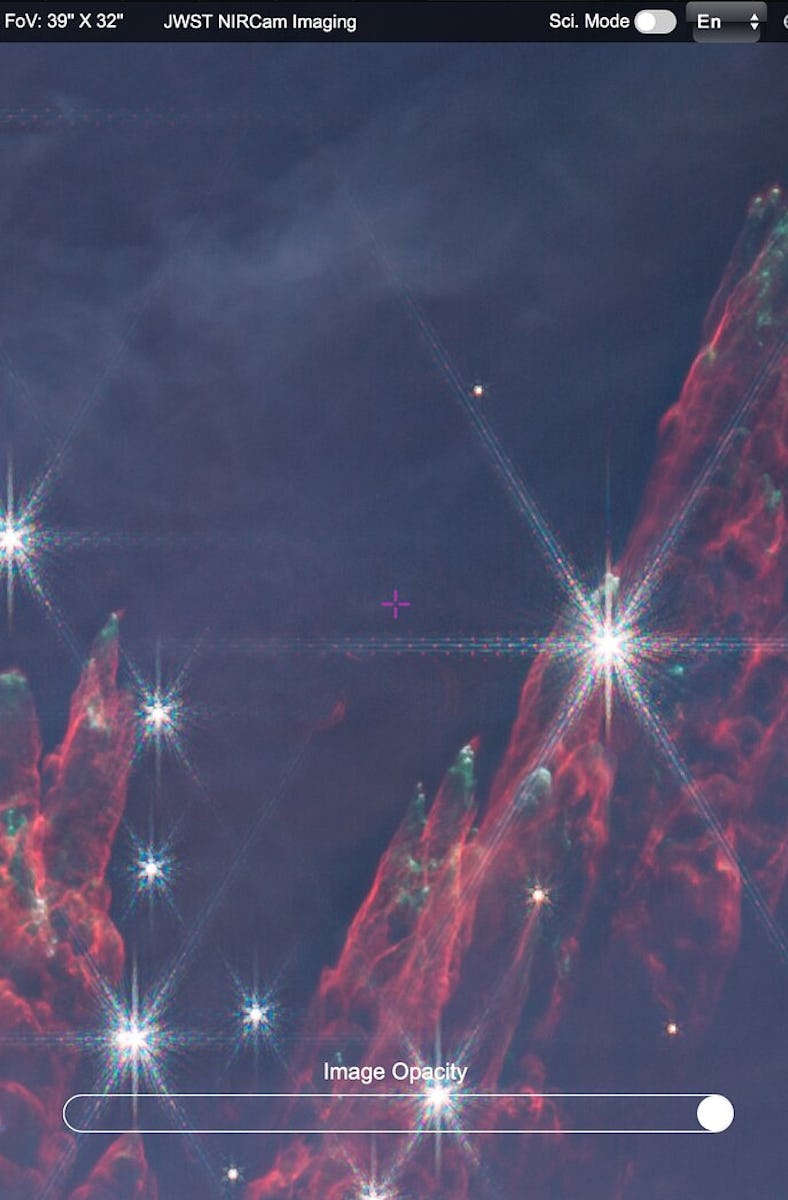Cosmic Eye Candy: Webb Telescope Just Captured Two Incredible Images of the Orion Nebula
The closest star-forming region to Earth is full of gorgeous hidden details.

The European Space Agency (ESA) just released a pair of giant mosaic images of the Orion Nebula, and they’re worth exploring.
Just 1,500 light years away, the Orion Nebula is so close that you can spot it with the unaided eye. The little blurry patch just below Orion’s Belt is teeming with stellar factories and newborn star systems; there’s no closer star-forming region to Earth, and astronomers often turn to the Orion Nebula to study how stars form, grow, and impact the space around them. For a much better view of this stunning nebula, you can tour these enormous new JWST images. Taken with the telescope’s Near InfraRed Camera (NIRCam), the pair of images reveal newborn stars, rogue planets, and blazing tendrils of gas in stunning detail.
ESA is encouraging people to take screenshots of their favorite details in the mosaics and share them online with the hastag #PiecesOfOrion.
Welcome to the Orion Nebula
Highlights on your tour of the Orion Nebula include the Trapezium Cluster, a group of massive young stars blasting the surrounding gas with powerful ultraviolet radiation. You can also spot disks of gas and dust that will eventually form planets around newborn stars, like the one below, which is being blasted by hot radiation and stellar winds from the Trapezium Cluster, stretching ionized gas out behind it like a comet’s tail.
Someday this disk of gas and dust will be a star system — if the stellar winds of newborn massive stars in the Trapezium Cluster don’t strip away all its material first.
The images also showcase regions of glowing, dramatically sculpted gas carved into phantasmagorical shapes by the winds of massive stars. Dotted between the huge, blazing blue-white new stars, the Orion Nebula is also home to brown dwarfs — gas giants that are almost, but not quite, heavy enough to collapse under their own gravity and kickstart nuclear fusion in their cores.
To explore the Orion Nebula for yourself, click here to view the mosaics in the ESASky browser application (you’ll want to click the “Explorer” option unless you’re an expert astronomer). The short-wavelength image is best for viewing disks of newly-forming planets and gas flowing away from newborn stars; the long-wavelength image is best for tracing filaments of dust and hydrocarbons that crisscross the nebula.